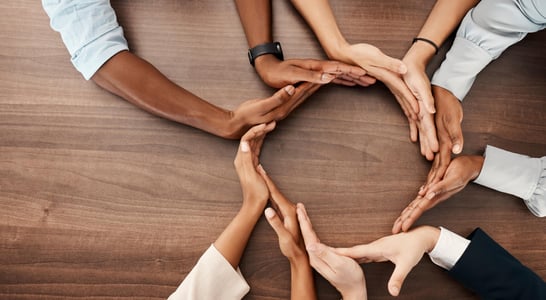
International Parity at Work Day
No matter their skin color, race, nation of origin, religion, or gender, it is only right and reasonable for people to be paid fairly equally for performing the same jobs for their employers.
Sadly, despite many decades of activism toward workplace equality, workers continue to experience pay inequality in workplaces all over the globe.
International Parity at Work Day is meant to bring attention to this continuing issue, as employers and governments work toward leveling the playing field and bringing about social change and fairness in the workplace.
History of International Parity at Work Day
The background of pay inequality can be traced back throughout human history. One obvious issue is related to the fact that women have often been considered lesser in many cultures, but these problems are also connected to discrimination due to race, religion, skin color, or even those who are differently abled. Pay inequality has been and continues to be a rampant problem present throughout most societies even in this modern age.
Some progress can be seen in certain spaces, countries and workplaces, including seeing the gender pay gap become smaller over the years in the US and the UK. Even so, the issues and need for parity in pay continue. International Parity at Work Day was founded to bring awareness to these problems and seek ways to resolve them.
In the mid-20th century, especially in some Western countries, the conversation about gender pay particularly came to the forefront through the International Labor Organization as well as US Congress passing initiatives into law. Throughout the 1990s, however, little was done to move in the right direction toward parity in the workplace, particularly in the United States.
Establishing a foundation for this day, Equal Pay Day was started in 1996 by the National Committee on Pay Equity (NCPE) in the US. This day was meant to bring attention to the number of days women have to work without pay in order to finally get equal pay with men. Equal Pay Day usually falls in early April or late March.
Even with work toward raising awareness, such as Equal Pay Day, the disparity in pay continued into the early 21st century, leading to the inaugural International Parity at Work Day. First celebrated in 2017, International Parity at Work Day began in countries around the world, including countries such as the United Kingdom, the United States, Japan, Australia, Sri Lanka and others.
In the UK, the inaugural celebration for International Parity at Work Day was held in London where events connected people of diverse backgrounds through multicultural performances, Q&A conversations and sharing of educational resources related to pay discrimination and equality. Hosted by Aon UK, the event featured inspirational conversations such as how Harry Specters Chocolates has enabled employment for autistic people.
During the first year of the day’s celebration in Japan, many doctors got together to address the problem of discrimination against women entering into medical school. An unofficial standard limit had been set, only allowing only 30% of the student body in medical schools to be female. In an effort to create more parity, many senior doctors worked to lobby universities to allow women equal access to study medicine.
Now, International Parity at Work Day is celebrated annually with the hope that it will continue to grow in scope and effectiveness as employers are challenged to provide a just and fair workplace for people of every color, gender, religion and more, no matter where they are in the world.
International Parity at Work Day Timeline
1951
Equal Remuneration Convention
The International Labor Organization focuses on equal pay for both genders.[1]
1963
Equal Pay Act addresses gender parity
The United States Congress makes a major move toward gender parity with the Equal Pay Act.[2]
1964
Title VII Civil Rights Act addresses race parity in US
This act broadens the idea of parity from gender to race, color, religion and national origin in the US.
1970
UK passes Equal Pay Act
A strike at the Ford factory in Dagenham two years prior leads to this act supporting pay parity for women.[3]
2009
Lilly Ledbetter Fair Pay Act passes
Signed by US President Barack Obama, this law requires employers to make more effort toward non-discriminatory pay practices.[4]
How to Celebrate International Parity at Work Day
Looking for ideas to participate in International Parity at Work Day? Consider implementing some of these ways to bring the day to the forefront of the minds in the local community and at work:
Bring Issues to Employers
Those who have noticed issues in their own workplaces may want to consider International Parity at Work Day as a motivating opportunity to bring attention to local problems with equality in the workplace. When the Paycheck Fairness Act was passed by the US Congress in 2021, it protected workers from being punished for sharing information about how much they make. This allows employees to do their own research and comparisons to raise questions about whether pay equity problems exist within their own space.
This might be just the right time to contact the Human Resources department at work and inquire about what policies they are enacting to ensure workplace parity. If they don’t seem to be making any strides in this area, perhaps request that they perform some audits within the company and then offer educational opportunities to make progress related to this important topic.
Learn More About Parity at Work
One important way to raise awareness for and get others to join in on the cause is to get more information and statistics related to International Parity at Work Day.
-
The gender wage gap in the United States in 2020 held steady at 82%. That means that for every one dollar a man makes, a woman makes 82 cents. As women get older, this pay gap increases to 75%.
-
The gender pay gap widens for people of color. In fact, Latina women make only 55 cents on the dollar when compared to white men.
-
15 of the 20 highest paying jobs in the United States are dominated by men whereas 14 of the lowest paying jobs are held by women.
-
Women with bachelor’s degrees are paid 26% less than their male counterparts, even though women are now earning more college and postgraduate degrees than men – and women hold around 60% of the nation’s outstanding student loan debt.
Contact a Local Representative
For those who live in counties, states or other areas that have struggles with pay gap issues, International Parity at Work Day might be just the right time to create or sign a local petition to bring about legislative change for the better related to this topic. Make a difference by getting involved!
International Parity at Work Day FAQs
What is gender parity?
Gender parity is a statistical measurement that determines if people have equality among genders, particularly in salary or pay.[1]
What are parity laws?
State and federal parity laws in the US aim to provide equal access to health insurance coverage for those in need of mental health and addiction treatment.[2]
Why is pay parity important?
Pay parity at work improves motivation and performance among coworkers while protecting minorities from discrimination.
How to calculate pay parity?
Sort salary data by gender, job title and hourly rate. Divide the sum total of each gender’s hourly rate by the total people to get the mean hourly rate for each gender, then compare the two.[3]
How do you get pay parity?
Employers can start with a pay equity audit, identify contributing operational gaps, then make a plan to progressively increase compensation for those affected.[4]
Also on ...
View all holidaysNational Milk Day
Whether cow, goat or oat, enjoy this refreshing drink, visit a dairy farm to see how it’s made or whip up some butter and cheese at home.
National Hot Toddy Day
A warm and soothing drink perfect for chilly nights, this classic beverage is a delightful combination of spices, honey, and whiskey.
Human Trafficking Awareness Day
Addressing a critical concern, awareness initiatives strive to liberate lives and foster a world free from exploitation.
We think you may also like...
Labor Day
The world is powered by hard-working individuals who bring creativity and innovation to their jobs every day, making the impossible possible.








